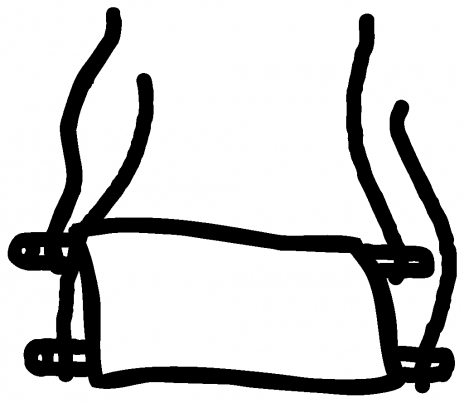
What Is True Faith?
- Recognize Jesus as the Messiah, one with authority to heal and forgive.
- Reflect on the definition of faith.
- Consider ways to put our faith into action.
Leader Reflection
This story is among nearly everyone's list of favorite gospel stories. It has everything you could want in a story---drama, friendship, mystery, and, of course, a happy ending.
The drama begins when a man and his friends face an obstacle. They believe Jesus can heal their friend, but how are they going to get him in front of Jesus so healing can happen? They put together an ingenious and audacious plan. While Jesus was inside the house, surrounded by crowds of people, they open a hole in the roof (likely made of mud and sticks) and lower the man to the floor, using a mat, until he comes to rest right under Jesus' nose. I love to picture the scene with Jesus teaching the crowds, when suddenly dust and sticks begin to fall, light appears through a hole in the ceiling, and a mat with a man on it bumpily drops down.
It says that Jesus saw their faith and then proceeded to heal the man who was paralyzed. Just pause and ponder what that says about faith. It's not just an individual thing. It can also be communal. We believe with and even for others. For example, it's the parents' faith that brings an infant forward for baptism. And often in our prayers for others we believe on their behalf.
Also notice that what Jesus saw as faith included the friends' ingenious and bold action. Faith isn't just a spiritual act or a mental activity. It involves acting on the basis of faith.
Jesus surprises everyone by pronouncing the man's sins forgiven. It's surprising because that's obviously not what they went through all the trouble for, and it's an act that requires divine authority to administer. We're not told the reactions of the man or his friends watching from the roof, but we hear that the teachers of the law are horrified. "Who does he think he is, forgiving sins? Only God does that!" Precisely!
Only then does Jesus heal the man, ordering him to take up his mat and walk. But he leaves us all with a question: Which is easier, to forgive sins or to heal a man who is paralyzed? Or, to put it another way, which is more important, deeper, and more lasting, to forgive sins or to heal a hurting body? But before we can answer the question, Jesus does both. He is the healer of body and soul.
Today's Q&A wonders about the nature of faith: "What is true faith?" The answer is that faith is knowing and trusting.
In order to trust in Jesus we have to know something about him. The man who was paralyzed and his friends at least knew that Jesus was healing people, and they wanted to be part of it. And they did everything they could to act on that knowledge. In order for us to have faith, we too need to know who God is and what God is up to in the world, a knowledge we gain through the Bible.
But knowledge is just the doorstep of faith. Knowing is not the same as believing. Faith takes off when knowledge becomes trust, when what we know about Jesus inspires us to put our lives in his hands. That trust is in the forgiveness of our sins. That's the great healing Jesus announces to the man in today's story, and the great healing he offers us in his cross and resurrection. This deep cleansing also comes with the promise of restoration of body and soul in the new creation.
When have you believed with and for someone else?
How do you see the relationship between forgiveness and the other forms of healing you desire from God?
When has faith inspired audacious action in your life?
Through the centuries and still today, many people have taught that this passage implies that people who live with disabilities have their disability because of their sin or their lack of faith. Whether or not you have children with disabilities in your class, be very careful not to imply this painful idea in your teaching. Disability does not imply sinfulness or a lack of faith. The greatest need of the man who was paralyzed was the same as the greatest need of every human: our sinfulness. Jesus addressed that need first; then to prove to the man and the bystanders that he had the authority to forgive sins, he cured the paralysis.
Young teens this age really value friendship and sometimes struggle with it. Play up that angle of the story and show how faith can be stronger when it’s shared among friends.
Again, this is a wonderful opportunity to share some of your own journey of faith, perhaps in your answers to the wondering questions above.
Steps
Before today’s session print and cut apart the “Who Would You Trust?” cards. If you have a larger group, make extra copies so you can give one card to each person.

Get Unlimited Access!
Sign up for DWELL Digital to unlock all online leader resources, printable pages and session plans.
Call 800-333-8300 or Request Access
Already a subscriber? Log In
Learn About DWELL
DWELL helps kids find their place in God's Big Story. Learn more about this popular and trusted children’s ministry curriculum.
